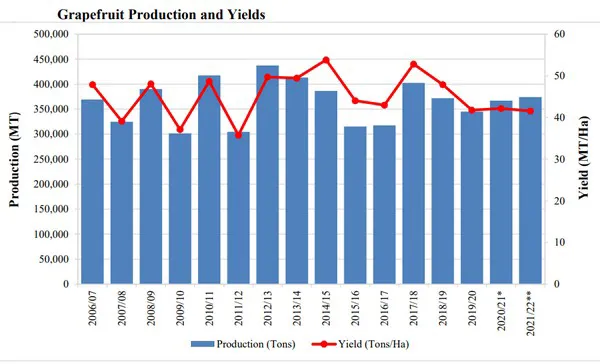The production of citrus is forecast to continue its strong growth in Marketing Year (MY) 2021/22, based on the increase in area planted, new-plantings coming into full production, available irrigation water, and normal weather conditions. Accessing new markets will be critical for South African producers, based on the growth in production, saturation in some traditional markets, global price decreases, and competition from other citrus producing countries. Duty-free exports of all citrus types to the United States under the African Growth Opportunity Act (AGOA) reached a peak of 91,402 MT in 2020, and are expected to continue their strong annual growth in 2021, as the United States is still considered a premium market.
Citrus in South Africa is grown across the country mainly in the Limpopo, Eastern Cape, Western Cape, Mpumalanga, Kwa Zulu Natal, Northern Cape, and North West provinces. An estimated total of 98,700 hectares (ha) was planted to citrus in South Africa in 2021, a 5 percent increase from 94,329 ha in 2020. This growth trend is forecast to continue in 2022 to 101,500 ha, based on the significant investments and aggressive new plantings of soft citrus, lemons, and new varieties of oranges.

The production of grapefruit is forecast to increase marginally by 2 percent to 374,000 Metric Tons (MT) in MY 2021/22, from 367,000 MT in MY 2020/21. This is based on normal weather conditions, good rainfall received in the main growing areas, and newly planted areas coming into full production.
Click here to read the full report.
Source: fas.usda.gov
